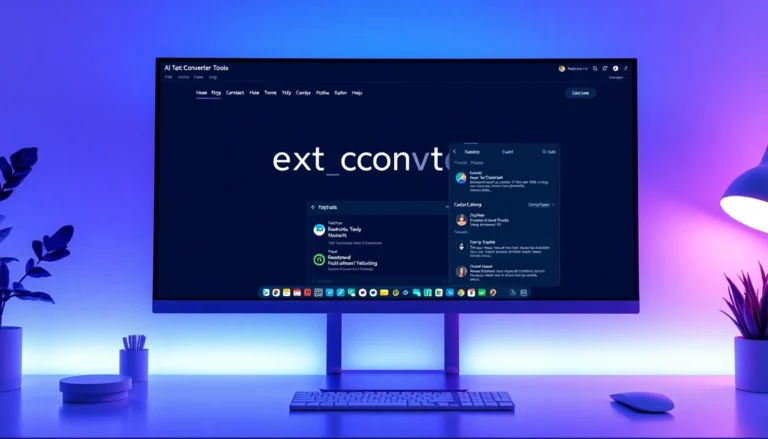
Understanding Excavator Rental: Key Factors and Benefits
In the landscape of modern construction, landscaping, and DIY projects, excavators stand out as indispensable tools that significantly enhance productivity and efficiency. As the demand for flexible and cost-effective equipment solutions rises, excavator rental has become a popular choice for contractors, businesses, and individuals seeking high-performance machinery without the financial burden of ownership. This comprehensive guide explores the various aspects of excavator rental, helping you make informed decisions tailored to your project needs and budget, while maximizing safety and efficiency.
Understanding Excavator Rental: Key Factors and Benefits
Types of excavators available for rent
Excavators come in a broad range of sizes and configurations, each suited for specific types of projects. The primary classification includes micro, mini, midi, and large-scale excavators, each offering unique advantages depending on scope, site constraints, and budget.
- Micro excavators: Typically weighing under 1 tonne, micro excavators are ideal for indoor or confined space projects, such as landscaping, small demolitions, and drainage work. Their compact size allows for maneuverability where traditional equipment cannot fit. For example, models like the Kubota micro excavator (0.75 Tonne) are perfect for delicate tasks or tight urban environments.
- Mini excavators: Ranging from 1 to 5 tonnes, mini excavators offer a balance of power and maneuverability, making them suitable for residential developments, utilities, and small commercial tasks. Their user-friendly controls and versatility make them a preferred choice for smaller contractors and DIY enthusiasts.
- Midi excavators: Weighing approximately 5 to 10 tonnes, these excavators are suitable for medium-sized projects such as road construction, large landscaping, or excavation on commercial sites. They provide increased digging depth and reach without the logistical challenges of larger machinery.
- Large excavators: Typically exceeding 10 tonnes, large excavators are used in heavy civil engineering, mining, and large-scale infrastructure projects. These machines have high lifting capacities, advanced hydraulic systems, and long reach capabilities required for extensive excavation tasks.
Understanding these categories helps in selecting an excavator that precisely fits the scope and complexity of your project, ensuring optimal performance and cost-efficiency.
Advantages of choosing professional excavator rental services
Opting for rental services from reputable providers offers numerous benefits that translate into operational excellence and safety. Key advantages include:
- Cost savings: Rental eliminates the need for large capital investments in purchasing equipment, ongoing maintenance, and storage costs. It provides access to modern, well-maintained machines on an as-needed basis.
- Access to the latest equipment: Rental companies regularly update their fleets, ensuring borrowers benefit from advanced technology, improved fuel efficiency, and enhanced safety features.
- Expert support and customization: Reputable rental services offer expert advice, tailored equipment options, and optional extras such as attachments and operator guidance, reducing downtime and increasing productivity.
- Flexibility and scalability: Rental contracts can be adjusted or extended based on project demands, facilitating project flexibility and resource management.
- Maintenance and safety compliance: Rental providers handle routine maintenance, inspections, and updates, ensuring machines meet safety standards and reducing liability for renters.
Partnering with established rental providers ensures you leverage industry expertise, access reliable machinery, and focus on project outcomes without operational distractions.
How excavator rental can reduce project costs
The financial benefits of rental extend beyond initial savings—properly leveraging excavator rental can profoundly impact overall project budgeting. Here’s how:
- Reduced capital expenditure: Instead of purchasing costly equipment upfront, rental spreads the cost over the project duration, freeing capital for other critical investments.
- Minimized maintenance costs: Rental agreements usually include maintenance and repairs, reducing unexpected expenses and downtime caused by equipment failures.
- Operational efficiency: Modern rental excavators tend to be more fuel-efficient and equipped with features that speed up tasks, decreasing labor hours and overall project duration.
- Strategic asset management: Renting allows for equipment exchange based on project phases, avoiding underutilized assets and associated costs.
Case studies reveal that projects utilizing rental excavators typically achieve substantial savings—up to 30-40%—compared to ownership, especially when factoring in maintenance, storage, and depreciation costs.
Selecting the Right Excavator for Your Project
Assessing project scope and equipment needs
Determining the correct excavator size and type begins with a thorough assessment of your project scope. Consider factors such as:
- Material type and volume to be excavated or moved
- Site dimensions and access points
- Required digging depth and reach
- Ground conditions and terrain complexity
- Timeline constraints and labor considerations
Accurate assessments prevent equipment mismatch, avoiding unnecessary costs or project delays. Consulting with rental specialists or commissioning site surveys can greatly improve decision accuracy.
Choosing between mini, midi, and large excavators
The decision hinges on balancing project demands with operational practicality:
- For small-scale projects and tight spaces: Micro and mini excavators are ideal. Their compact size allows access in confined environments, and they are easy to operate for less experienced workers.
- For medium projects requiring versatility: Midi excavators provide more power and reach, suitable for landscaping, utility work, and small commercial projects.
- For large-scale, heavy-duty projects: Large excavators maximize productivity in civil engineering, mining, and infrastructure development but require broader access and higher budget considerations.
Choosing the right size ensures operational efficiency, safety, and cost-effectiveness, preventing both underuse and unnecessary overspending.
Factors influencing rental price and availability
Rental prices fluctuate based on several factors, including:
- Machine size and specifications: Larger, more advanced models command higher rental rates.
- Rental duration: Longer rentals often benefit from discounted daily or weekly rates.
- Seasonality and demand: Peak construction seasons can impact availability and pricing.
- Location: Proximity to the rental provider’s depot affects delivery costs and scheduling flexibility.
- Attachments and additional features: Specialized tools like breakers, augers, or augers can influence overall costs.
Early booking and flexible scheduling can mitigate costs and ensure equipment availability during critical project phases.
Best Practices for Excavator Operation and Safety
Pre-operation safety checks and guidelines
Ensuring safety begins with thorough pre-operation inspections. Key steps include:
- Checking fluid levels—hydraulic, engine oil, fuel, and coolant.
- Inspecting tracks, tires, and undercarriage for wear or damage.
- Verifying the functionality of lights, alarms, and emergency stops.
- Confirming attachments are properly secured and in good condition.
- Reviewing the worksite for obstacles, overhead hazards, or uneven terrain.
Operators must also review the equipment manual and conduct a visual risk assessment before each operation.
Proper handling techniques for efficient digging
Optimizing performance requires skillful operation. Best practices include:
- Using smooth, controlled movements to prevent unnecessary wear and ensure safety.
- Maintaining proper digging angles and avoiding overloading the arm or bucket.
- Monitoring ground stability and adjusting techniques to prevent tipping.
- Employing correct lifting techniques for loads to prevent structural damage or accidents.
- Adhering to load capacity limits specified by the manufacturer.
Regular training and refresher courses can enhance operator proficiency, reducing mistakes and increasing safety margins.
Maintenance tips to prolong equipment lifespan
Proactive maintenance safeguards your rental investment:
- Performing daily inspections for leaks, loose bolts, or abnormal noises.
- Cleaning filters and cooling systems to prevent overheating.
- Lubricating moving parts according to manufacturer recommendations.
- Scheduling periodic professional servicing, especially after prolonged use.
- Documenting maintenance activities and reporting issues immediately.
Adherence to maintenance schedules ensures reliable operation and reduces unexpected breakdowns.
Booking and Managing Your Excavator Rental
Rental process: reservation, delivery, and pickup
Efficient management of your rental begins with planning. Key steps include:
- Reservation: Book well in advance, considering lead times for peak seasons or specialized equipment.
- Delivery: Coordinate with the rental provider to schedule delivery at your site’s convenience, factoring in access and site readiness.
- Usage: Inspect the equipment upon arrival, and confirm that all attachments and safety features are in place.
- Pickup: Arrange for timely pickup or return, avoiding extended rental periods that incur extra charges.
Understanding rental agreements and insurance options
Rental contracts outline terms, including rental duration, machine condition, and liability clauses. Essential considerations include:
- Coverage for damages or theft—insurance options often available to mitigate risk.
- Terms for maintenance responsibilities—whether included by the provider or the renter.
- Conditions for extensions or early returns.
- Deposit requirements and cancellation policies.
Always review agreements thoroughly to ensure clarity and protection for both parties.
Tips for scheduling equipment for maximum productivity
Strategic scheduling enhances project flow:
- Align equipment availability with project milestones to avoid delays.
- Coordinate with other trades to minimize equipment idle times.
- Stagger rentals to optimize cost and utilization.
- Plan for weather contingencies and logistical challenges.
Maintaining clear communication with your rental provider ensures timely delivery and support, preventing costly disruptions.
Measuring Success: Performance Metrics and Cost Efficiency
Monitoring project progress with rented excavators
Track key metrics such as:
- Digging speed and productivity—measured in cubic meters per hour.
- Operational uptime—the duration equipment is productive versus downtime.
- Fuel consumption rates relative to workload.
- Safety incident rates during equipment operation.
Regular monitoring allows for adjustments, improves efficiency, and provides data for future project planning.
Cost analysis: rental versus ownership benefits
Evaluating costs involves considering:
- Initial purchase price versus rental fees over project duration.
- Maintenance, storage, and repair costs for ownership.
- Operational flexibility and equipment upgrade options.
- Tax implications—rental costs are often fully deductible.
Typical analysis shows rental as the more flexible and cost-effective approach, especially for projects of short to medium duration.
Evaluating rental service quality and customer support
Customer satisfaction hinges on:
- Availability of responsive customer service and technical support.
- Equipment reliability and cleanliness.
- Transparency in pricing and contractual terms.
- Flexible arrangements for changes or emergencies.
Seeking reviews, testimonials, and consulting with rental providers can ensure a smooth rental experience.




